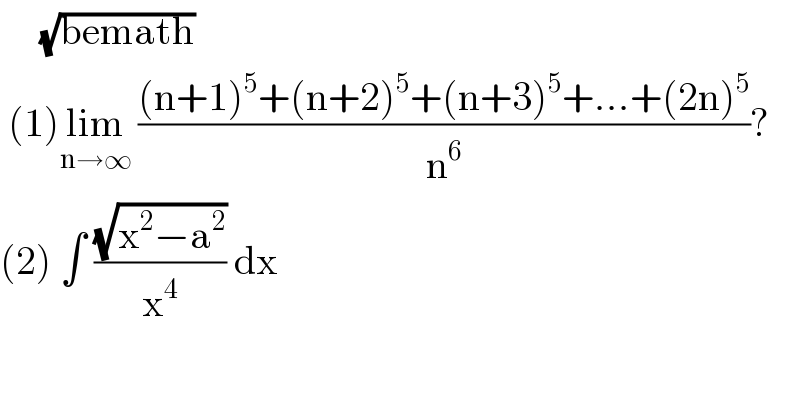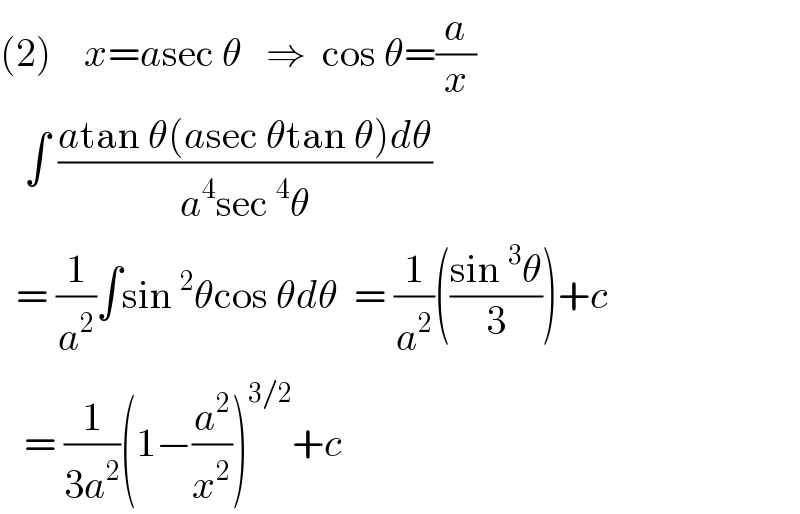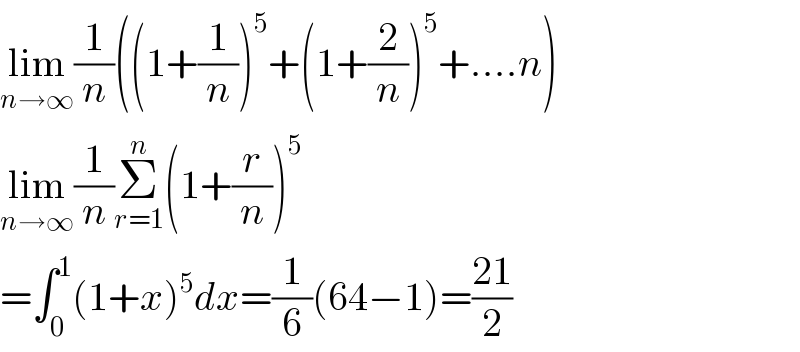Question Number 111313 by bemath last updated on 03/Sep/20

Answered by ajfour last updated on 03/Sep/20

Commented by bemath last updated on 03/Sep/20

Answered by bobhans last updated on 03/Sep/20
![(■) I=∫ ((√(x^2 −a^2 ))/x^4 ) dx [ let x = a sec t ⇒ dx = asec t tan t dt ] I = ∫((√(a^2 (sec^2 t−1)))/(a^4 sec^4 t)). a sec t tan t dt I= (1/a^2 ) ∫ ((tan^2 t )/(sec^3 t)) dt = (1/a^2 )∫ sin^2 t cos t dt I = (1/a^2 ) ∫ sin^2 t d(sin t) = (1/(3a^2 )) sin^3 t + c I = (1/(3a^2 )) (((√(x^2 −a^2 ))/x))^3 + c = (1/(3a^2 x^3 ))(√((x^2 −a^2 )^3 )) + c](https://www.tinkutara.com/question/Q111316.png)
Answered by bobhans last updated on 03/Sep/20
![(★) L = lim_(n→∞) [(1/n^6 ) Σ_(k=1) ^n (n+k)^5 ] L = lim_(n→∞) [ Σ_(k=1) ^n (1+(k/n))^5 .(1/n) ] recall ∫_a ^b f(x) dx = lim_(n→∞) Σ_(k=1) ^n f(x+k.△x).△x where △x = ((b−a)/n), we have △x = (1/n) by letting → { ((a=1)),((b=2)) :} therefore L = ∫_1 ^2 x^5 dx = [(1/6)x^6 ]_1 ^2 =((63)/6)=((21)/2)](https://www.tinkutara.com/question/Q111317.png)
Commented by bemath last updated on 03/Sep/20

Answered by Dwaipayan Shikari last updated on 03/Sep/20

